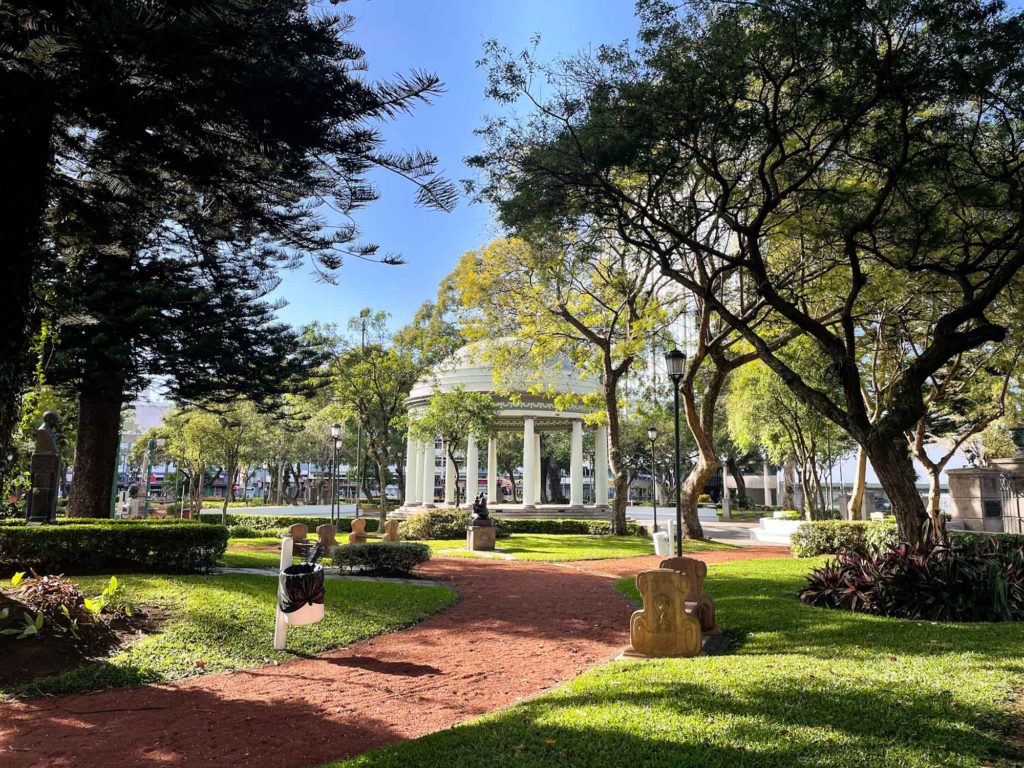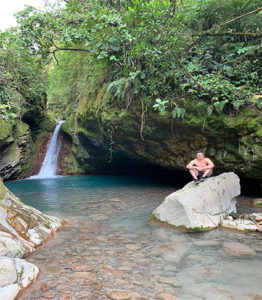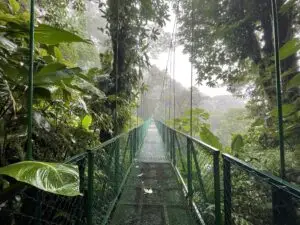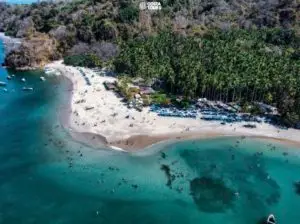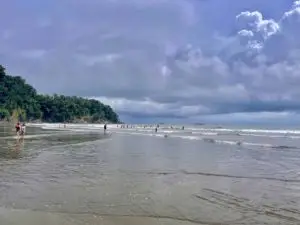(This is part 2 of a full day itinerary for a city walk in San José Costa Rica. If you haven’t read part 1, feel free to read it here: City Walk in San José Costa Rica Part 1)
Part 1 of this article was the morning of a full one-day city walk in San José. In case you decided to enter one or two museums, maybe it took you more than one morning. So, you can easily break this itinerary into two days. If you walked from one landmark to another following the itinerary, let’s have to best out of the afternoon!
Last time, you were wandering in the lovely neighborhood of Barrio Escalante. After having lunch, looking around, and maybe even having ice cream, let’s go back to the city center. Head back to “La Antigua Aduana,” and from there, go west in direction to the Atlantic Railroad Station. In most of the XX century, this station used to be very popular since it was the primary connection between San José and the ports in the Atlantic region. Nowadays, this station still operates but trains from the Central Valley of Costa Rica’s main cities.
National Park / Art and Contemporary Design Museum / Electoral Liberty Square
As you walk down, back to the city center through “Paseo de Los Damas,” you will see a park on your left. This park is Costa Rica’s National Park. This is a lovely park that sometimes holds pop up markets and public concerts. There is one of Costa Rica’s most famous sculptures in the center of the park, The National Monument of Costa Rica. This bronze sculpture was built in France at the end of the XIX century. This represents the victory of Costa Rica against invaders in 1857.
As you keep walking down the Paseo de Los Damas, you will see the Electoral Liberty Square, a small square in front of the Tribunal Supremo de Elecciones. This institution ensures the democratic elections in Costa Rica are free and fair.
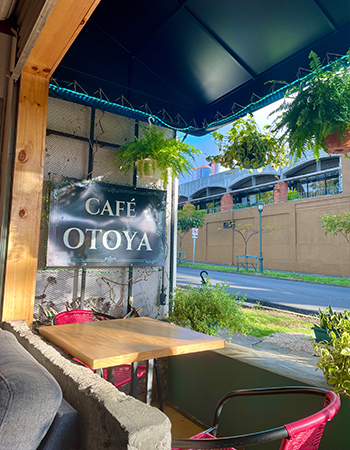
You will see the Art and Contemporary Design Museum of Costa Rica(or MADC) across the street. This museum has interior rooms with art expositions and an outdoor space that usually receives exhibitions, musical, theatrical, or dance performances. The MADC is open to the public with free entrance from Tuesday to Saturday from 10 am until 5 pm.
Barrio Otoya
After checking the MADC, head to Barrio Otoya through Road 15. This is one of the most beloved neighborhoods in San José and has two of the most popular coffee shops in the city, Café Otoya, and Café Miel. If you want to spend the rest of the afternoon just chilling with a cup of coffee in one of these two places, I won’t judge you! But if you want to finish your one-day itinerary, let’s keep going.
Buenaventura Corrales School / Morazán Park
After having a cup of coffee and enjoying the afternoon, let’s head to one of Costa Rica’s most beautiful buildings. Let’s go to the Buenaventura Corrales School (also called The Metallic Building). This magnificent building was built in 1896 in Belgium, inspired by the Eiffel Tower of Paris. This building was brought to Costa Rica in pieces and, since its construction, has been home to one of Costa Rica’s oldest schools.
In front of the Metallic Building, you can see the Peace Garden. People usually enjoy the afternoons in this garden, lying in the grass, or listening to local musicians. Across the street, you will see Morazán Park (the feature image of this article). In the center of Morazán Park, you can find the Temple of the Music, a 1920 building with almost perfect musical acoustics. 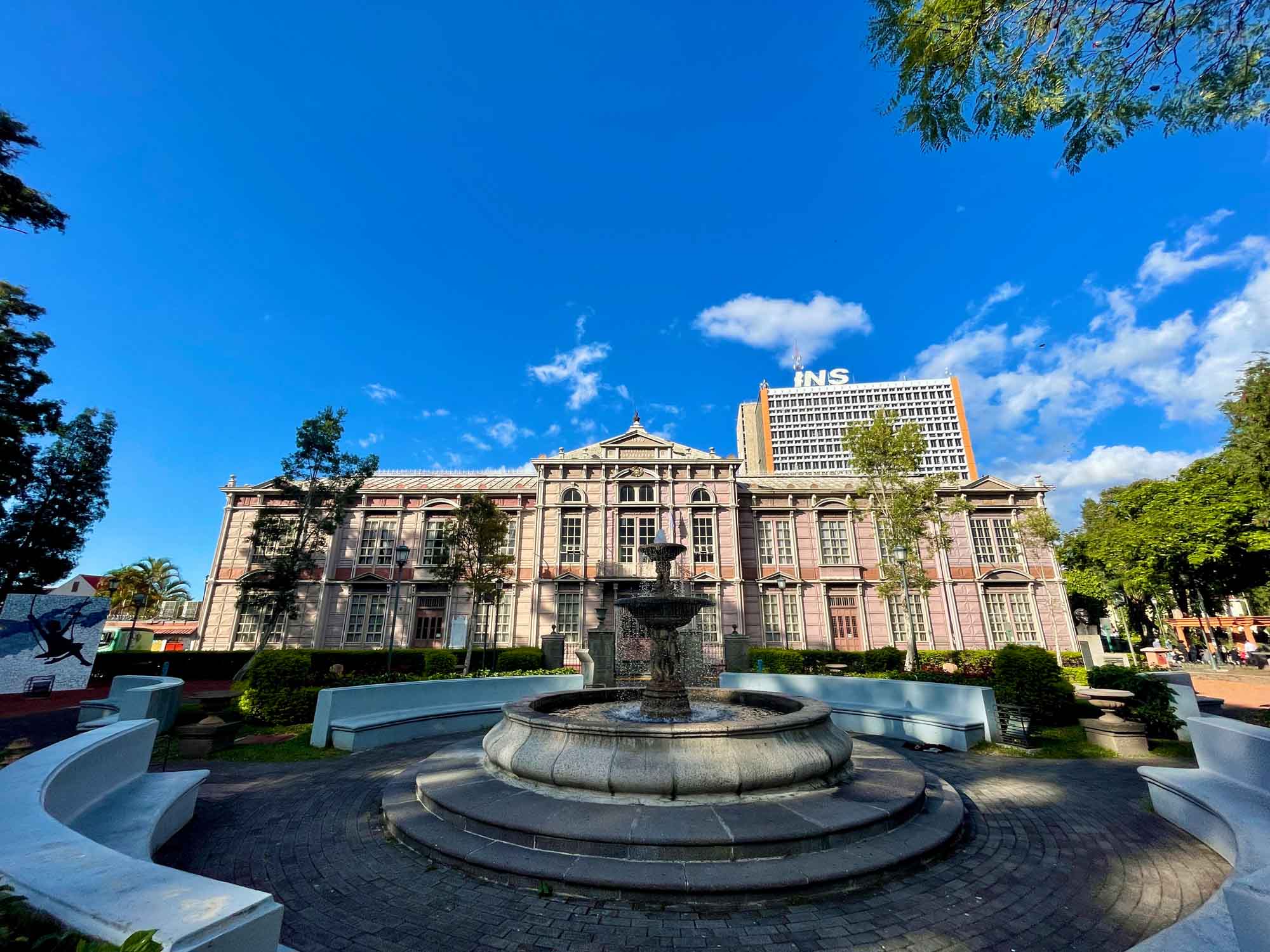
Buenaventura Corrales School, San José
Melico Salazar Theatre / Central Park / San José’s Cathedral
After taking some photos in Morazán Park, you should keep heading west as our city walk in San José will be coming to an end soon. Go check out Costa Rica’s Post Office building. This is one of the loveliest buildings around San José. Near the Post Office (two blocks south), you will find the Melico Salazar Theatre, the second most famous theatre in Costa Rica. This theatre usually receives good musical and theatrical performances throughout the year. Make sure you check the Melico Salazar Theatre website to see what’s live.
In front of the Melico Salazar Theatre, you will find our city walk’s last stops in San José’s itinerary. Central Park and San José’s Cathedral are next to each other, and they are important San José landmarks.
(In case you want to finish in the same place we started this one-day walk itinerary in San José, you are close. Costa Rica’s National Theatre is just two blocks east of the Melico Salazar Theatre and the Central Park.)

Honorable Mentions
As I mentioned at the beginning of part 1 of this article, you won’t need to walk much in this city walk in San José itinerary. So, there are some important landmarks that we didn’t include in the itinerary. Now I will show you the prominent San José city landmarks that I left out of the itinerary but are worth your time!
Children’s Museum & Penitentiary Museum
Just around 1Km northwest of Costa Rica’s National Theatre stands the Children’s Museum. This is a yellow castle building that used to be a prison back in most of the XX century. That’s why there is a section inside the building named the Penitentiary Museum. These museums are in a bad neighborhood, so since it was a city walk itinerary, I didn’t include it. But you can always grab an Uber or taxi from the city center and get to this place safely.
The Children’s Museum is a combination of science and natural history museum, so you would see plenty of rooms that teach kids about several subjects. Some of these rooms are Earth, Sea Life, Space, Dinosaurs and Costa Rican values, and coffee history. The ticket entrance fee is around $5.
Museum of Costa Rican Art / La Sabana Park / Costa Rica National Stadium
La Sabana Park is the most significant metropolitan park in Costa Rica. This place is filled with sports courts, has an important museum, and Costa Rica’s biggest stadium inside. The park is excellent if you want to take some fresh air but don’t want to leave San José’s city center.
The important museum inside La Sabana is the MAC or Museum of Costa Rican Art. If you are into art, this museum is a must-visit for you since it has the biggest collection of Costa Rican art. This museum is open from Tuesday to Sunday from 9 am until 4 pm.
On the northwest corner of La Sabana Park is located Costa Rica’s National Stadium. This stadium is home to Costa Rica’s national football teams. There are guided tours inside the stadium, but you’ll have to arrange that with the stadium administration on their website.

